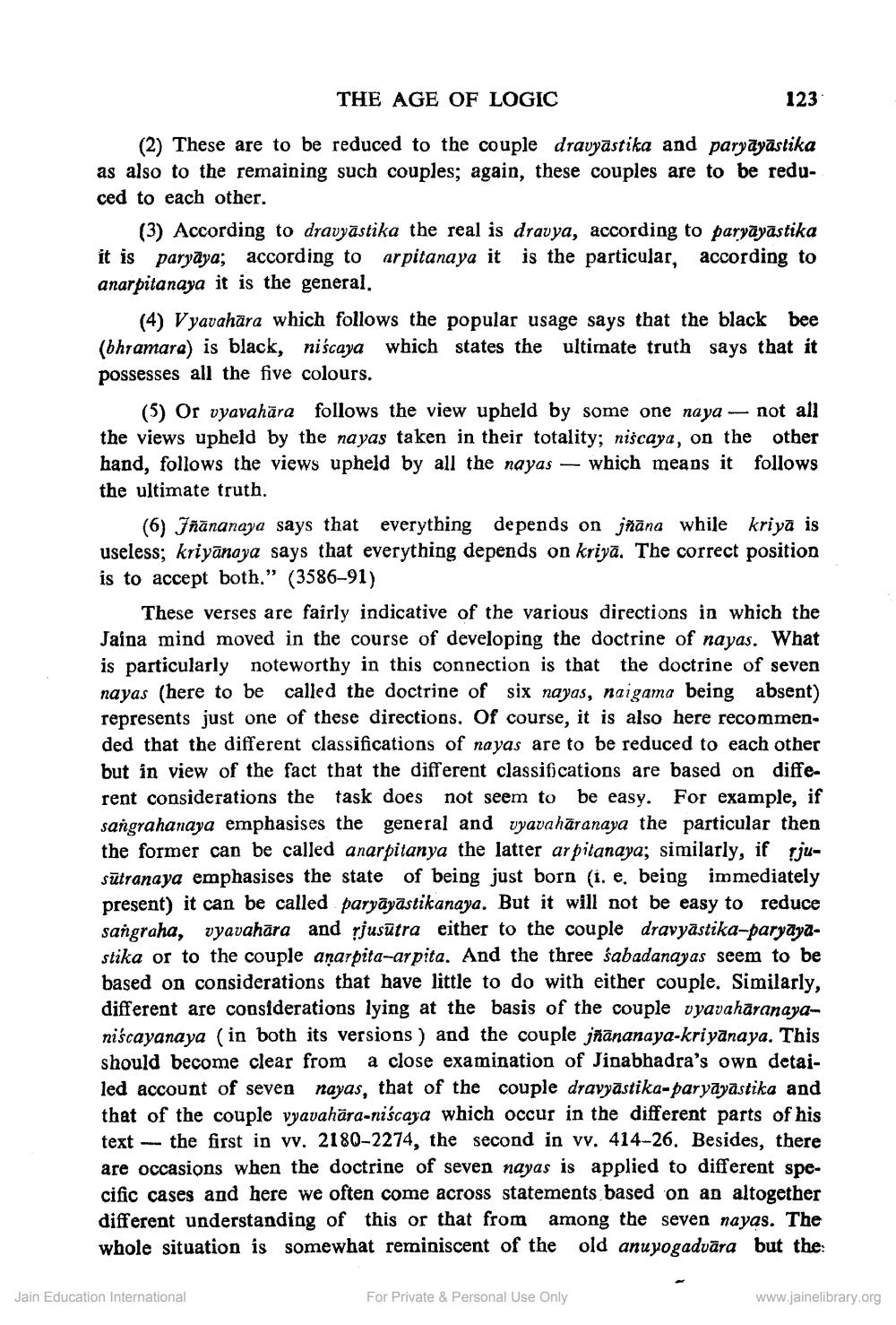________________
THE AGE OF LOGIC
123
(2) These are to be reduced to the couple dravyāstika and paryāyāstika as also to the remaining such couples; again, these couples are to be reduced to each other.
(3) According to dravyāstika the real is dravya, according to paryāyāstika it is paryāya; according to arpitanaya it is the particular, according to anar pitanaya it is the general.
(4) Vyavahāra which follows the popular usage says that the black bee (bhramara) is black, niscaya which states the ultimate truth says that it possesses all the five colours.
(5) Or vyavahāra follows the view upheld by some one naya — not all the views upheld by the nayas taken in their totality; niscaya, on the other hand, follows the views upheld by all the nayas -- which means it follows the ultimate truth.
(6) Jħānanaya says that everything depends on jñāna while kriya is useless; kriyānaya says that everything depends on kriya. The correct position is to accept both.” (3586-91)
These verses are fairly indicative of the various directions in which the Jaina mind moved in the course of developing the doctrine of nayas. What is particularly noteworthy in this connection is that the doctrine of seven nayas (here to be called the doctrine of six nayas, naigama being absent) represents just one of these directions. Of course, it is also here recommended that the different classifications of nayas are to be reduced to each other but in view of the fact that the different classifications are based on different considerations the task does not seem to be easy. For example, if sangrahanaya emphasises the general and vyavahāranaya the particular the former can be called anar pitanya the latter ar pitanaya; similarly, if juSūtranaya emphasises the state of being just born (i. e, being immediately present) it can be called paryāyastikanaya. But it will not be easy to reduce sangraha, vyavahāra and rjusūtra either to the couple dravyāstika-paryayastika or to the couple añarpita-arpita. And the three sabadanayas seem to be based on considerations that have little to do with either couple. Similarly, different are considerations lying at the basis of the couple vyavahāranayaniscayanaya (in both its versions) and the couple jñānanaya-kriyānaya. This should become clear from a close examination of Jinabhadra's own detailed account of seven nayas, that of the couple dravyāstika-paryāyāstika and that of the couple vyavahära-niscaya which occur in the different parts of his text - the first in v. 2180-2274, the second in vv. 414-26. Besides, there are occasions when the doctrine of seven nayas is applied to different specific cases and here we often come across statements based on an altogether different understanding of this or that from among the seven nayas. The whole situation is somewhat reminiscent of the old anuyogadvāra but the
Jain Education International
For Private & Personal Use Only
www.jainelibrary.org




